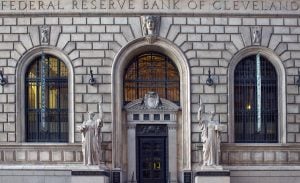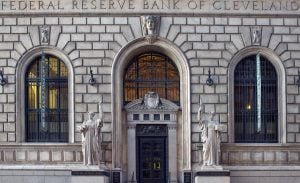Economics
Markets Are Highly Reactive To Mixed Messages From Fed And Economic Data
Stocks, precious metals, and cryptocurrencies had a volatile week, rising Friday morning. These asset classes spiked a day after a significant drop occurred…


Stocks, precious metals, and cryptocurrencies had a volatile week, rising Friday morning.
These asset classes spiked a day after a significant drop occurred on Wednesday and Thursday. The drop happened as a reaction to the Fed’s interest rate and policy announcement Wednesday afternoon.
Fed Chair Jerome Powell sent mixed messages regarding its monetary policy plans for the near future.
Get The Full Henry Singleton Series in PDF
Get the entire 4-part series on Henry Singleton in PDF. Save it to your desktop, read it on your tablet, or email to your colleagues

Q3 2022 hedge fund letters, conferences and more
The Fed’s statement pointed to a perceived pivot but when Powell took questions at the end of the announcement, he had a “hawkish” tone which sent the market on a rollercoaster ride.
Powell noted that inflation is on track to increase over the next several months and the Fed has a lot of work to complete. The Fed’s inflation rate target is 2%, which is significantly lower than the last CPI reading of 8.2% year-over-year.
The Fed has indicated that since unemployment is low and GDP rose in the 3rd quarter, inflation will persist over the next couple of months.
Then, Boston Fed President Susan Collins suggested that she is ready to slow the pace of Fed rate increases and that all options should be on the table at the Fed’s next meeting, including 75 or 25 basis point hikes
A “dovish” tone from several Fed members, plus mixed economic data released this week has created a volatile market.
Manufacturing Dropped In October
Recently, GDP data was released showing that the US economy improved in the third quarter. Unfortunately, the US manufacturing sector seems to be shrinking.
Earlier this week, the Manufacturing Purchasing Managers Index dropped to 50.2 in October, a decline from September’s 50.9 reading. Manufacturing demand is expected to drop significantly as inflation rises.
In addition, manufacturers are worried about the rise in interest rates which in turn will make the cost of borrowing more expensive, decreasing investment and further slowing economic growth.
The Fed’s plan for the central bank to successfully control inflation rates will be to lower the amount of capital circulating through the financial system. This will lower demand for goods and services, which in turn, will lower prices.
Payrolls Grew By 261,000, Exceeding Expectations
Nonfarm payrolls rose by 261,000 in October, surpassing the 205,000 estimated figure. The job market still remains strong despite the Fed’s “aggressive” policy strategy.
The unemployment rate did tick up a little more than expected, hitting 3.7%. Although the current payroll figures are better than expected, it is still growing at the slowest pace since 2020.
Average hourly wages increased by 4.7% YoY and 0.4% MoM, but still lag behind inflation.
The industries that gained the most employment were led by health care (53,000 positions), followed by professional and technical services (43,000 positions), and manufacturing (32,000 positions).
Leisure and hospitality jobs also grew, up by 35,000 jobs. Although this industry made gains of 78,000 a month in 2022, figures are dismal compared with the 196,000 from 2021.
Bloomberg chief economist Anna Wong said the following:
“…the jobs report for October sends mixed signals about the labor market, with one survey showing robust job gains while another shows a big jump in unemployment.
Filtering the noise in the data, our takeaway is that the labor market is still very tight and much adjustment still needs to occur before unemployment is close to a neutral level.
We expect that the Fed will ultimately have to raise rates to 5% next year.”
The positive job growth is under threat by the Fed’s interest rate hikes as we can see in the tech industry.
Amazon announced Thursday that it will halt the hiring of employees in its corporate sector. Also, Apple said it would pause hiring for its R&D division.
Lyft, Twitter, Stripe, Robinhood, and Coinbase have announced layoffs of their workforce.
In summary, if the Fed fails to control inflation rates, the stock, bullion, crypto, FOREX, and bond markets will continue their highly volatile ride.
inflation
monetary
markets
policy
metals
interest rates
fed
central bank
monetary policy

Argentina Is One of the Most Regulated Countries in the World
In the coming days and weeks, we can expect further, far‐reaching reform proposals that will go through the Argentine congress.
Crypto, Crude, & Crap Stocks Rally As Yield Curve Steepens, Rate-Cut Hopes Soar
Crypto, Crude, & Crap Stocks Rally As Yield Curve Steepens, Rate-Cut Hopes Soar
A weird week of macro data – strong jobless claims but…
Fed Pivot: A Blend of Confidence and Folly
Fed Pivot: Charting a New Course in Economic Strategy Dec 22, 2023 Introduction In the dynamic world of economics, the Federal Reserve, the central bank…



















